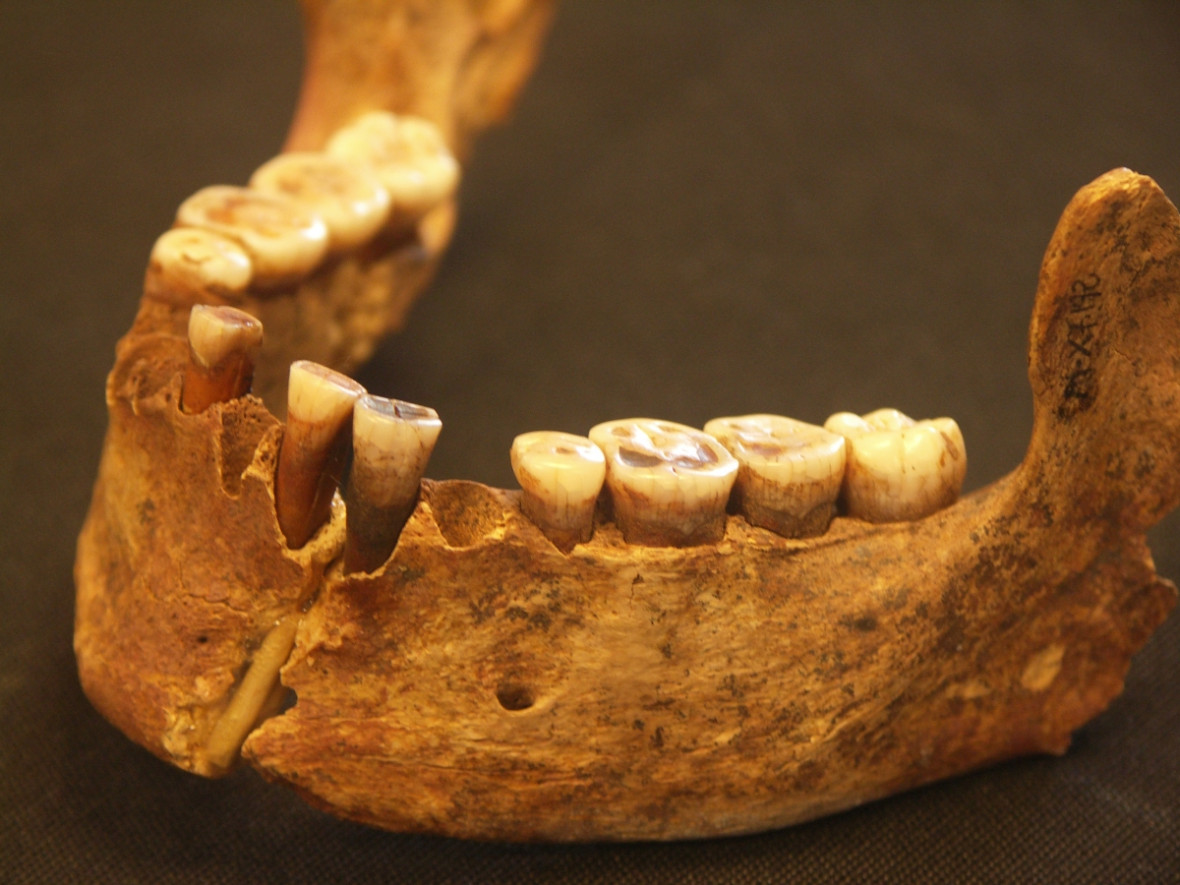The Red Lady of El Mirón
At the time of his discovery, Otzi the Iceman was the oldest known example of humanity’s relationship with mushrooms, especially as anything other than food. However, in 2010, archeologists found the remains of a Magdalenian woman who was buried almost 19,000 years ago, making her around 14,000 years older than Otzi. Her discovery was important for many reasons, not the least of them being her connection to mushrooms.
The bones and surrounding area were coated in shimmering red ochre, made from non-local haematite. Her body had apparently been coated in it at the time of her burial, and after a carnivorous animal got to her remains she was recoated. Small flowers likely surrounded her body at the time she was buried.
Beginning in 1996, a group, led by Professor of Anthropology, Lawrence Straus, had investigated the cave of El Mirón for 14 years before the Red Lady was found. Artifacts and bones had already been studied, however, the bones of the Red Lady were in the back of the cave, hidden away behind a block of limestone. Engravings marked the limestone; several V shapes thought to symbolize that a female was hidden beyond. Paintings surrounded the area as well.
Magdalenians, a hunter-gatherer society spread across Western Europe at the end of the last Ice Age, weren’t known for burying their deceased. In fact, what they did with their dead is largely unknown, especially on the Iberian Peninsula. Archaeologists have been searching for burial sites from the era for roughly 150 years, and this is the first they’ve found. Therefore, the ceremonial burial of this woman seems to indicate that she was important to her people in some way, but the theories on that differ drastically: some believe she must have been some sort of leader, likely a spiritual one, while others believe that she was most likely a ritual sacrifice.
Before researchers discovered her, wild animals had munched on her and she was missing several bones, including her skull and a majority of her long bones. However, her jaw was intact and still had almost all of her teeth, which was quite an achievement for an almost 40-year-old in those times.

Plaque scraped from between her teeth was analyzed in a lab. Amongst the calcified remains of plants and animals, it was discovered that she had eaten two different types of mushrooms; a mushroom with gills from the Agaricales order, and a sponge capped one from the Boletaceae family. While it is almost certain that the bolete was eaten solely as a delectable snack, many think the agaric could have been eaten as part of a ritual. The spores that were found didn’t give enough information to determine exactly which strains of the species she had eaten, however, and that information is essential for more accurate guesses as to the purposes the mushrooms served.
While we’ll never know the full story of the Red Lady of El Mirón and her role in life, her discovery is intriguing. It leaves us with more questions than answers, but it’s remarkable to see proof that mushrooms usage goes so far back in history.
A couple of possible examples of mushrooms eaten by The Red Lady:

